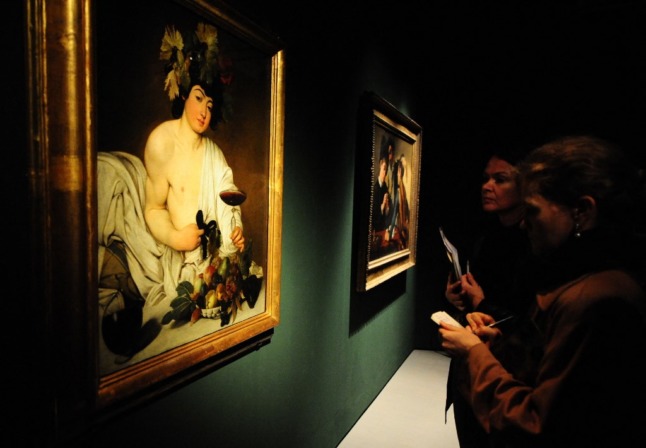The sprawling property, valued at 471 million euros (almost $540 million), is a Baroque jewel with gorgeous gardens and a valuable art collection that also includes frescoes by Guercino.
Art lovers are demanding the Italian state step in to buy the spectacular property, arguing that artistic treasures should be protected and available for public viewing.
But the government might not have enough to cough up for it – the auction is only open to those who can put up 10 percent of the starting price of 353 million euros – and rumoured buyers include Bill Gates and the Sultan of Brunei.
READ ALSO: New York returns 200 stolen antiquities to Italy
The auction was ordered by a Rome court following a dispute among the heirs of Prince Nicolo Ludovisi Boncompagni, the head of the family who died in 2018.
The dispute is between the prince’s third and final wife, Rita Jenrette Boncompagni Ludovisi, a 72-year-old American former real estate broker and actor who once posed for Playboy, and the children from his first marriage.
‘Auction of the century’
The residence of the noble Ludovisi Boncompagni family for hundreds of years, the 2,800-square-metre (30,000 square feet) Casino dell’Aurora is located in central Rome between the Via Veneto and the Spanish Steps.
Its sale is being held behind closed doors, and has been dubbed by Italian media as the “auction of the century” in its breathless reporting on the legal wrangling around it and who could buy it.
There are those who believe the cultural gem should be preserved for the nation.
READ ALSO: INTERVIEW: From Rome to Madrid in search of a lost Caravaggio
Almost 35,000 people have called on the Italian government to exercise “its pre-emptive right” to buy the building and the Caravaggio, which alone is valued at 350 million euros, according to a petition on change.org.
“Sign this petition to prevent another piece of Italy, such a beautiful one, from being sold off,” it said.

However, the estimated price of the villa represents a quarter of the annual budget of the culture ministry.
Culture Minister Dario Franceschini wrote this month to Prime Minister Mario Draghi and the finance minister to raise the issue of the sale, according to reports.
Under Italian law, the government can only exercise its pre-emptive rights after the sale to a private individual, and then within 60 days of the sale’s competition – and for the same price.
‘Beautiful, important building’
The oil mural by Caravaggio – real name Michelangelo Merisi – dates to 1597 and is located on the ceiling in a corridor on the first floor of the palace.
It depicts Jupiter, Pluto and Neptune with the world at the centre, marked by signs of the zodiac.
“It’s certainly one of his earliest (works) and is very interesting because the subject is a mythological subject, and Caravaggio painted almost only sacred works,” art historian Claudio Strinati told AFP.
The palace was originally an outbuilding in the grounds of the Villa Ludovisi, of which nothing remains today. Its name comes from a Guercino fresco depicting the goddess Aurora, or Dawn, on her chariot.
“It is a very beautiful, very important building, with some very beautiful paintings,” said Strinati, a former museum curator in Rome.
“It would certainly be a positive thing if it became public property, it could become the home of a museum or particularly important cultural activities.”
The auction is due to start on Tuesday at 3pm Rome time and will last 24 hours.



 Please whitelist us to continue reading.
Please whitelist us to continue reading.
Member comments